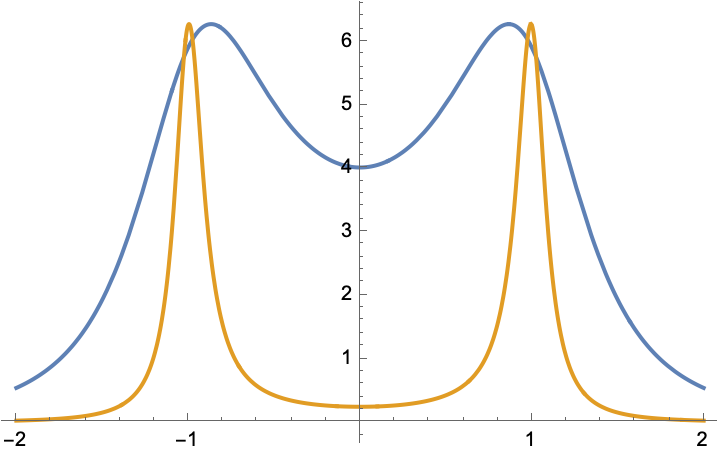You can just Fourier transform your signal $x(t)$ $$\hat{x}(\omega)=\int_{-\infty}^\infty x(t)e^{i\omega t}\,dt=\frac{A\omega_0}{\alpha^2-2 i \alpha \omega+\omega_0^2-\omega^2}.$$$$\hat{x}(\omega)=A\int_{0}^\infty \sin(\omega_0 t)e^{-\alpha t}\,e^{i\omega t}\,dt=\frac{A\omega_0}{\alpha^2-2 i \alpha \omega+\omega_0^2-\omega^2}.$$ The peak in $|\hat{x}(\omega)|^2$ for $\alpha<\omega_0$ is at $\omega=\pm\sqrt{\omega_0^2-\alpha^2}$ of height $A(8\pi \alpha^2)^{-1}$.
The limit $\alpha\rightarrow 0$ gives you delta function peaks, which will be regulated by the time discretisation step $\delta t$. For $\alpha\delta t>1$ the peak height will then decay as $1/\alpha$.
To see the peak shiftThere has been a (in response to a comment by the OPnow partially deleted) discussion whether the damping shifts the peak frequency. It does. To see this, I plot $$8\pi\alpha^2|\hat{x}(\omega)|^2=8\pi A^2\frac{(\alpha\omega_0)^2}{\left(\alpha^2+\omega_0^2\right)^2+2 \omega^2 (\alpha^2-\omega_0^2)+\omega^4}$$ as a function of $\omega$ for $\omega_0=1$, $A=1$, and $\alpha=0.1$ (gold) and $\alpha=0.5$ (blue).


The separation between the peaks is reduced by an amount $\alpha^2/\omega_0$ for $\alpha\ll\omega_0$.
